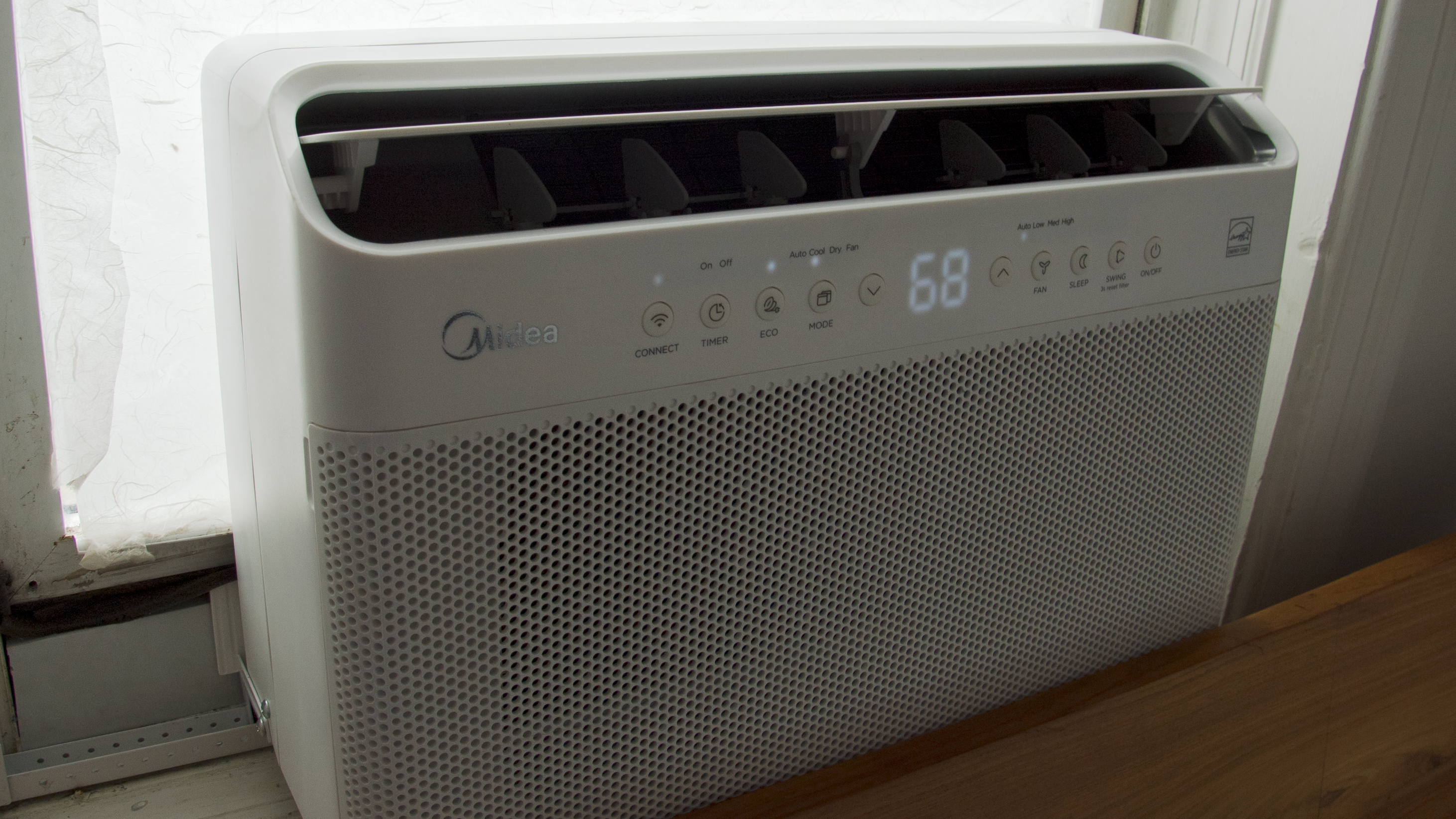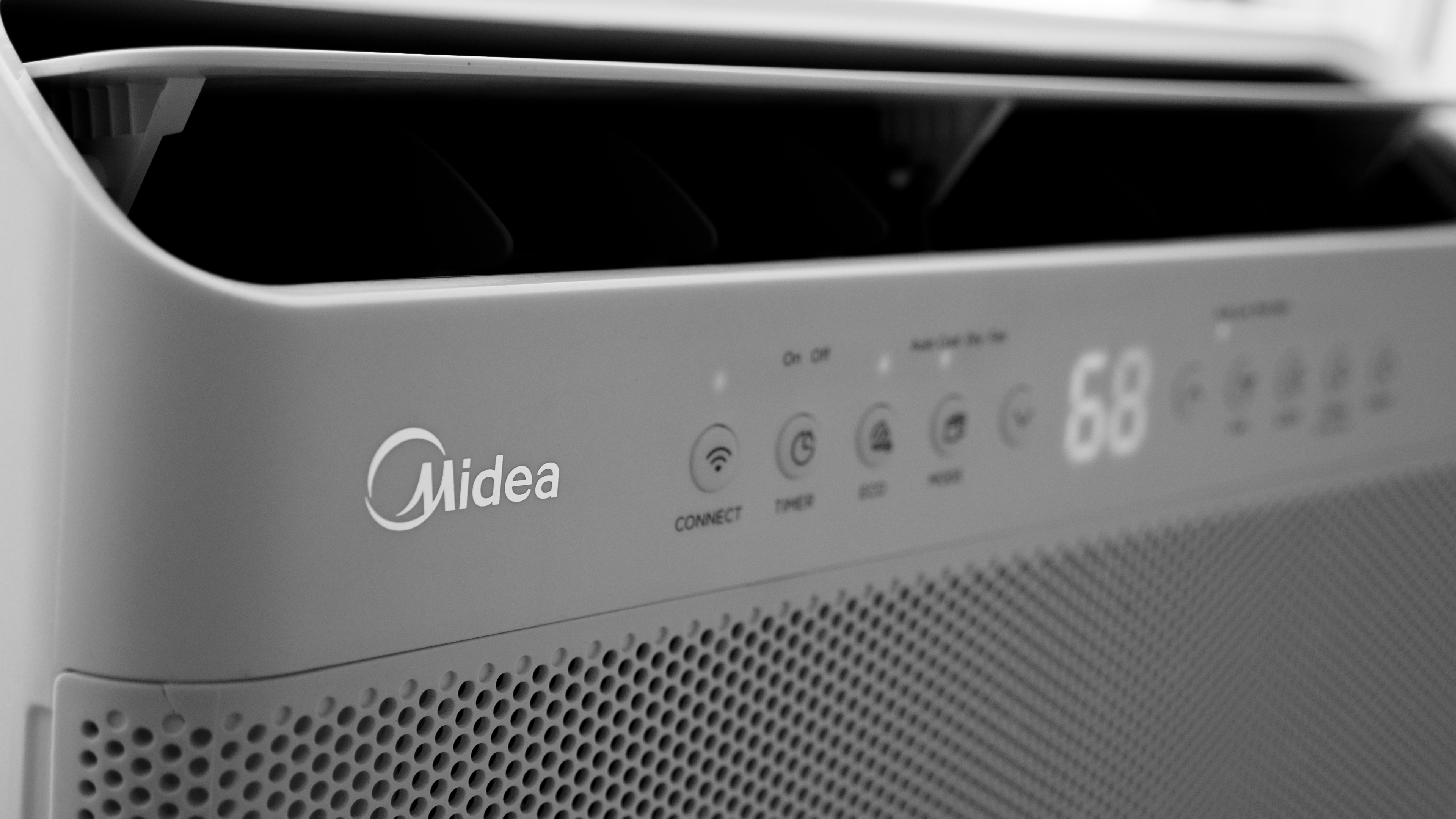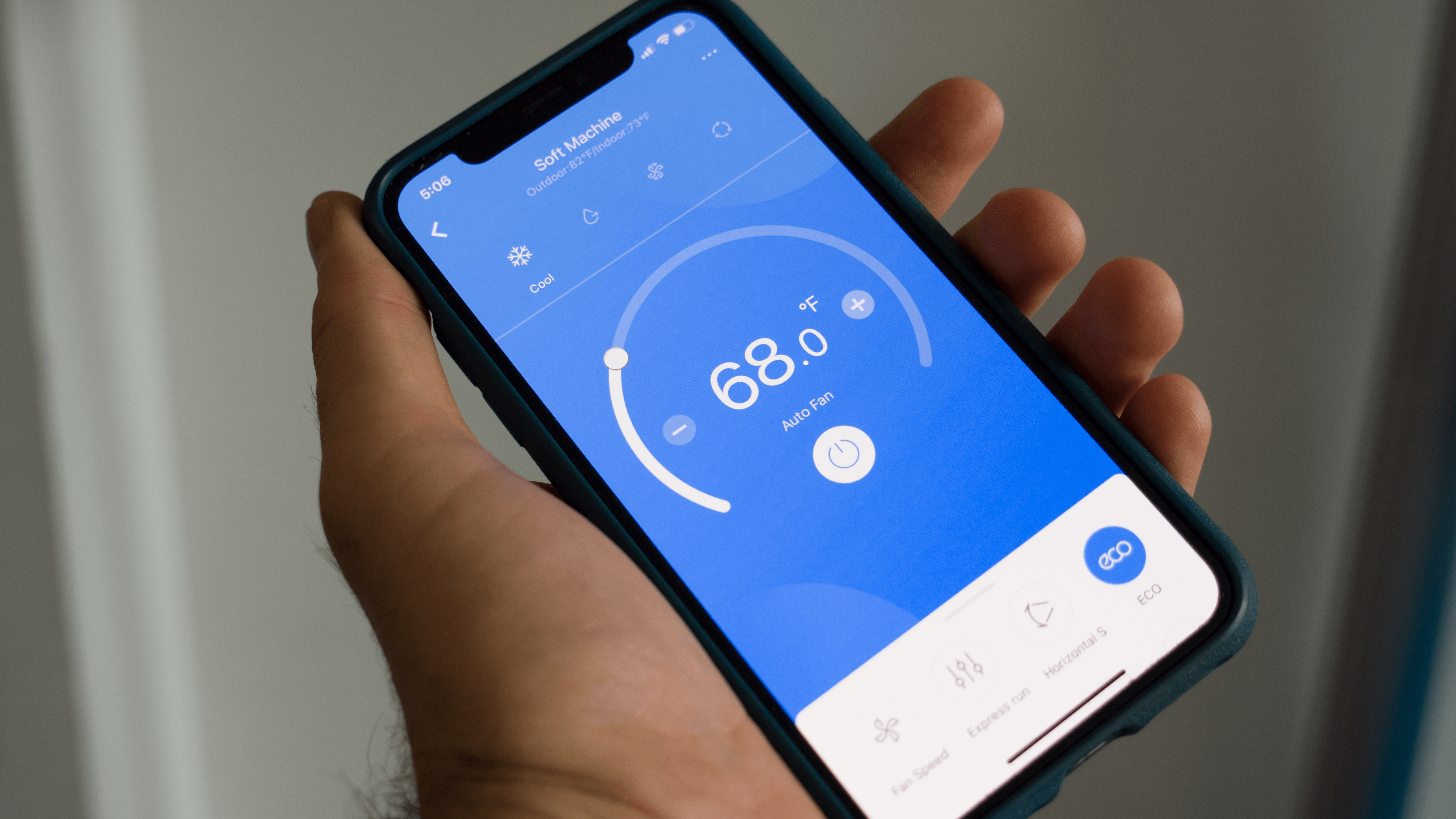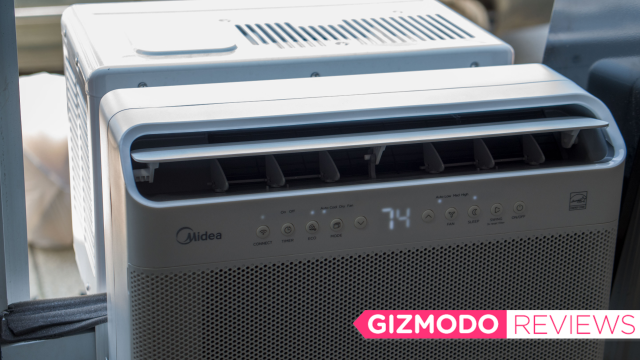This air conditioner’s design is, frankly, upsetting.
Let me back up: I despise most air conditioners. If you live in New York (or possibly have moved out VERY SUDDENLY), you know the standard window unit A/C that many of us have to install in our apartments is a gargantuan burden and annual source of mental stress. Most are loud, shitty, and do the job of cooling your place inefficiently at best. If you walk down any city block you will see them dangling out of windows, propped up precariously by (at most) a wedge of wood. Do not think about the load-bearing properties of that wood too long unless you want to mentally reenact a Stephen King story.
Better, more civilised cities get around this problem by building an unobtrusive, ductless, mini-split system right into your apartment. Those things are great — if you’ve ever been to Japan, they’re everywhere. New York is not one of those places: Our buildings are old and our landlords are lazy. Bring the rickety death trap A/C that you found on a street corner, and if you don’t like it, go to hell.
Which brings me to Midea’s bizarre, U-shaped air conditioner. This thing is so well designed that I’m Yosemite Sam levels of upset. I’m actually livid at how good this thing is.

Midea U-Shaped Air Conditioner
What is it?
A weird, surprisingly quiet window air conditioner
Price
Starts at $US340 ($489) for the 8,000 BTU model reviewed
Like
U-shape design significantly reduces the amount of noise; attractive; lets you open a window if you don’t seal it up too much; secure fit; real damn quiet.
No Like
Some minor high-pitched frequencies when the unit kicks into high gear; no HomeKit support; LEDs might be bright at night for some; the manual(s) need an overhaul.
Midea’s U-shaped air conditioner looks like your standard window unit, except with a chunk taken out of the middle so that your window can close through it. This reduces the amount of area that needs to be covered by the flimsy extending wings that usually come with an A/C unit, reduces the amount of ambient noise you hear, and makes it so you can just open your window without accidentally crushing a jogger to death.
The way Midea gets around this is clever, but also somewhat convoluted. The unit comes with a special bracket (which every A/C unit should have anyway) that you drill directly into your window and then secure into the unit. By design this makes a lot of sense; if you didn’t secure the unit into the window, it wouldn’t work. But just be aware that this thing has four different convoluted manuals and requires you to pay more attention during the installation process than your standard window unit does. A good drill and a few viewings of Midea’s installation videos will go a long way, because the manual itself isn’t all that clear.

Once I installed and booted up this thing, I realised just how quiet it is. Other people in my apartment remarked on how quiet this thing is. “Damn, that thing is quiet,” they said.
I was unscientifically clocking around 47 decibels on my iPhone (which is indeed quiet), but I’m also not an engineer. I’m just a guy that does a bunch of voiceover work and game-streaming and is paranoid about background noise while recording. Cutting out the window works, and with the exception of an audible squeak when the unit occasionally kicks into high gear, all you hear is a faint fan noise. The only other noise I heard was a slight sloshing of pooled water on humid and rainy days, but this was improved when I found out you need to install the unit at a slight angle facing downward in order for it to drain correctly.
The real test of this thing came when I went to sleep. Due to the layout of my apartment, the only spot I can place an air conditioner was right above my be. This usually means that every summer, I just get deeply mediocre sleep. No more: Midea’s A/C is so incredibly quiet. The only distraction I experienced was the soft glow of the LED lights, which you can thankfully disable in the app.

The Midea A/C is wifi-enabled, so you can download an app to control it with your phone (registration required). The app itself is fairly robust and useful, allowing you to control the unit and set schedules, and it’s compatible with Google Home and Alexa (but not Apple’s HomeKit). If you don’t own an Alexa-enabled device because you don’t want to mess around with any of that Internet of Things shit, you’re absolutely on the right side of history — but also the unit comes with a standard remote for controlling it manually. It also has a “swing” feature that throws the air around to better simulate a breeze, which I found pleasant, a dehumidifying dry mode, and a “sleep” function that raises the temperature slightly for 7 hours before returning to the base temperature. All of those can be toggled on with the app, the remote, or on the unit itself.
For all those features, I’m surprised that this thing is decently priced: starting at $US340 ($489) for 8,000 BTU (with larger models available). I have to recommend this. You pay slightly more than you would a standard window A/C unit, but you get a lot of bang for your buck.
Basically, if you haven’t absconded to a relative’s house in the suburbs and still live in a blighted American city that for some reason requires you to install a primitive A/C loosely in a window where it will dangle and cause you incredible anxiety for several years (although it probably won’t hurt anyone), get this thing instead. It looks smart and does a great job, and I’m guessing every competing A/C company worth their salt will probably try to knock it off.
README
- Brilliant, quiet and secure design, and looks nice to boot. If you’re going to do a window unit, this is just how it should work.
- You can open your window without it being an ordeal.
- Seriously, it’s quiet.
- Documentation and installation process absolutely needs to improve in the next version.
- App isn’t half bad if you’re into that IFTTT stuff — works with Alexa and Google Home. HomeKit support would be ideal.
- Makes me upset at other air conditioners.
